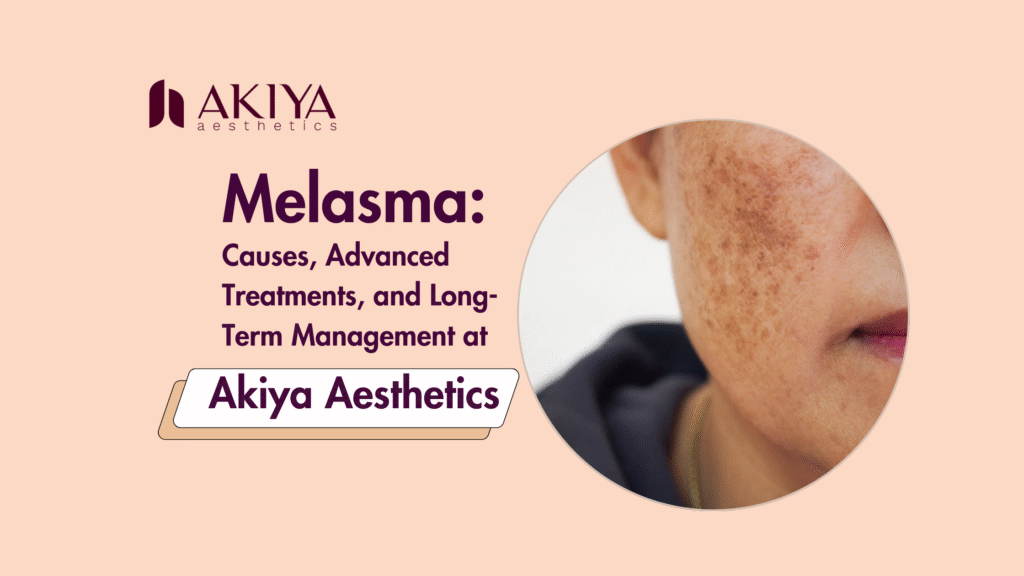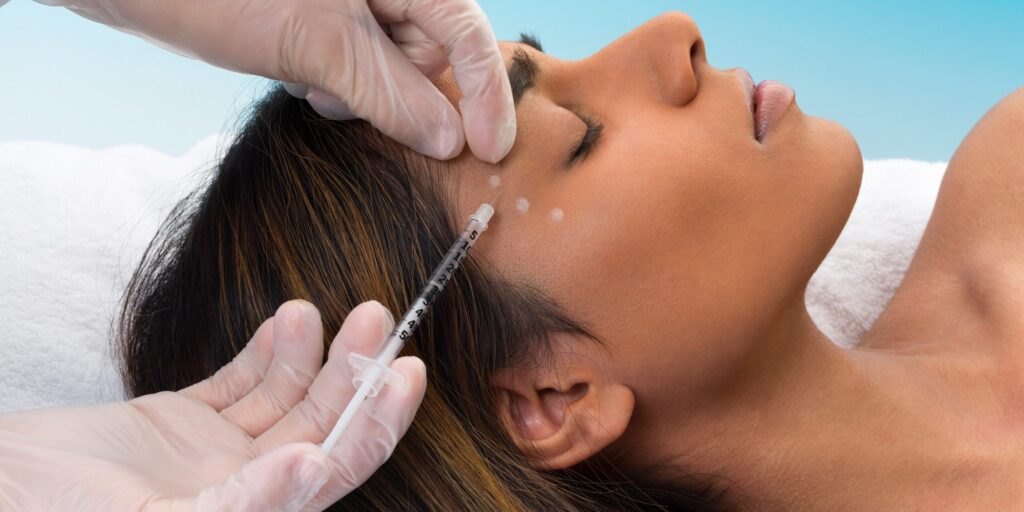Understanding Melasma:
Melasma, often recognized by brown or gray-brown patches, is a skin condition with complex causes, making it challenging to treat and manage. It is commonly triggered by sun exposure, hormonal changes (like those seen during pregnancy), and genetics. Women, especially those with darker skin types, are at a higher risk of developing melasma, though it can affect anyone.
Key Causes and Pathophysiology
The exact cause of melasma isn’t fully understood, but several factors contribute to its development. These include:
- Unprotected Sun Exposure: Ultraviolet (UV) radiation is a major trigger, as UV light stimulates melanocytes, or pigment-producing cells, to increase melanin production. Studies have shown that even low levels of UV exposure can cause significant melasma darkening, indicating the importance of rigorous sun protection for those at risk. Avoiding sunscreen usage can potentially increase the risk.
- Hormonal Changes: Hormonal fluctuations, such as those occurring in pregnancy, menopause or due to birth control pills, play a significant role in melasma.
- Genetics and Skin Sensitivity: A family history of melasma and an individual’s skin sensitivity contribute to its occurrence. Melasma is most common among Fitzpatrick skin types III to V (darker skin tones) suggesting that those with a natural tan or brown skin tone are at greater risk.
- Inflammation and Environmental Factors: Pollution, heat, and even stress have been linked to melasma, as they can increase skin inflammation.
Best Melasma Treatment in Delhi:
Due to complexities, a single treatment may not suffice. The best skin clinic in Delhi, Akiya Aesthetics, provides a more multi-faceted, advanced approach that combines modalities for best results.
-
Topical Agents:
Topical creams are a first-line treatment for melasma and may include:
- Hydroquinone: A skin-lightening agent that inhibits tyrosinase, an enzyme involved in melanin production. Clinical studies show that hydroquinone can lighten dark patches in as little as 4–8 weeks. However, its use is often limited to short periods due to potential skin sensitivity.
- Azelaic Acid and Kojic Acid: Known for their brightening effects, these acids are less likely to cause irritation and work by reducing free radicals in the skin, which can help diminish pigmentation.
- Tranexamic Acid: Initially used to treat bleeding disorders, tranexamic acid in topical form has shown promising results in reducing melasma by inhibiting melanin synthesis and has become popular due to its efficacy and minimal side effects.
-
Chemical Peels:
Chemical peels such as glycolic, lactic, or trichloroacetic acid (TCA) peels are effective in resurfacing the skin and fading pigmentation by removing the superficial skin layers where melanin accumulates. Studies indicate that regular chemical peeling sessions can significantly reduce pigmentation in patients with melasma. At Akiya, peels are customized based on the patient’s skin type, severity of melasma, and treatment history.
-
AFT Laser and Light-Based Treatments:
Lasers are often an option for patients with persistent melasma that doesn’t respond to topical treatments. Akiya Aesthetics uses fractional and AFT (Advanced Fluorescent Light) non-ablative lasers, known to reduce pigmentation without downtime. Here’s how laser treatments work:
- Q-Switched Nd YAG Laser: This laser targets melanin and breaks it down without affecting the surrounding skin. With precise wavelengths, it disrupts pigment particles, which are then cleared by the body’s natural processes.
- AFT: Though not a laser, AFT therapy is a light-based treatment that targets pigmentation in multiple skin layers, particularly effective for larger or deeper pigmentation.
Technology Focus at Akiya Aesthetics:
The sophisticated equipment at Akiya ensures melasma is treated effectively while preserving skin integrity. Advanced devices like these deliver controlled, intense energy bursts that target melanin precisely, minimizing the risk of worsening pigmentation or triggering post-inflammatory hyperpigmentation (PIH).
-
Peel for Pigmentation (Cosmelan):
Cosmelan peel is a professional depigmentation treatment designed for effectively treating hyperpigmentation issues, including melasma, dark spots, and post-inflammatory pigmentation. Its formulation combines active ingredients like azelaic acid, kojic acid, phytic acid, and retinyl palmitate, which work synergistically to inhibit tyrosinase, an enzyme that drives melanin production. By suppressing tyrosinase activity, Cosmelan significantly reduces melanin synthesis, targeting and reducing pigmentation at both the surface and deeper skin levels.
Peel for pigmentation involves an initial mask application, followed by a continuous at-home regimen, ensuring deep penetration and prolonged action. Studies have shown that Cosmelan can reduce pigmentation by up to 95%, with visible improvements often within the first week and optimal results around the 2-3 week mark. For long-term efficacy, post-procedure care is critical, including daily SPF use to prevent further UV-induced pigmentation.
-
Microneedling and Infusion Therapy:
Microneedling, with Derma Pen or Morpheus 8, involves creating micro-injuries in the skin, stimulating collagen production and enhancing the absorption of topical agents like Vitamin C, tranexamic acid, or hyaluronic acid, which are infused during the treatment. This technique, combined with special skin lightening serums, can significantly improve the results by enhancing the penetration of these agents.
-
Sun Protection and Skincare Regimen:
Strict sun protection is vital for managing melasma, as even brief UV exposure can intensify pigmentation. Sunscreens blocking UVA and UVB rays are essential; those containing zinc oxide or titanium dioxide provide a physical barrier. Dr. Rupika Singh, dermatologist and founder, Akiya Aesthetics, prescribes medical-grade sunscreens for patients’ skin type, ensuring high SPF protection and moisturizing properties to prevent further irritation.
Prognosis and Recurrence:
In practical terms, melasma can be persistent and often recurs, making it essential for patients to maintain a preventive skincare routine.
Recurrence rates are high, especially if patients are exposed to UV radiation or hormonal triggers return. Although many treatments can lighten melasma patches, the underlying propensity for pigment production remains. Therefore, continued maintenance, regular check-ups, and sun protection are crucial for long-term management.
Research shows that even after successful treatment, approximately 33–50% of patients may experience a recurrence, highlighting the need for a proactive, consistent approach. This underscores the importance of a personalised plan and follow-up, where patient education, preventive care, and advanced treatment options come together to manage melasma effectively.
Melasma Treatment at Akiya Aesthetics:
Our goal is to provide every patient with a tailored treatment plan that not only treats but also maintains skin health for lasting results. Whether you’re dealing with mild skin pigmentation or stubborn melasma, our approach combines the latest in dermatology to deliver healthy, even-toned skin that inspires confidence.
For anyone struggling with melasma, remember that treatment is a journey, and with the right care, long-term improvement is within reach.






